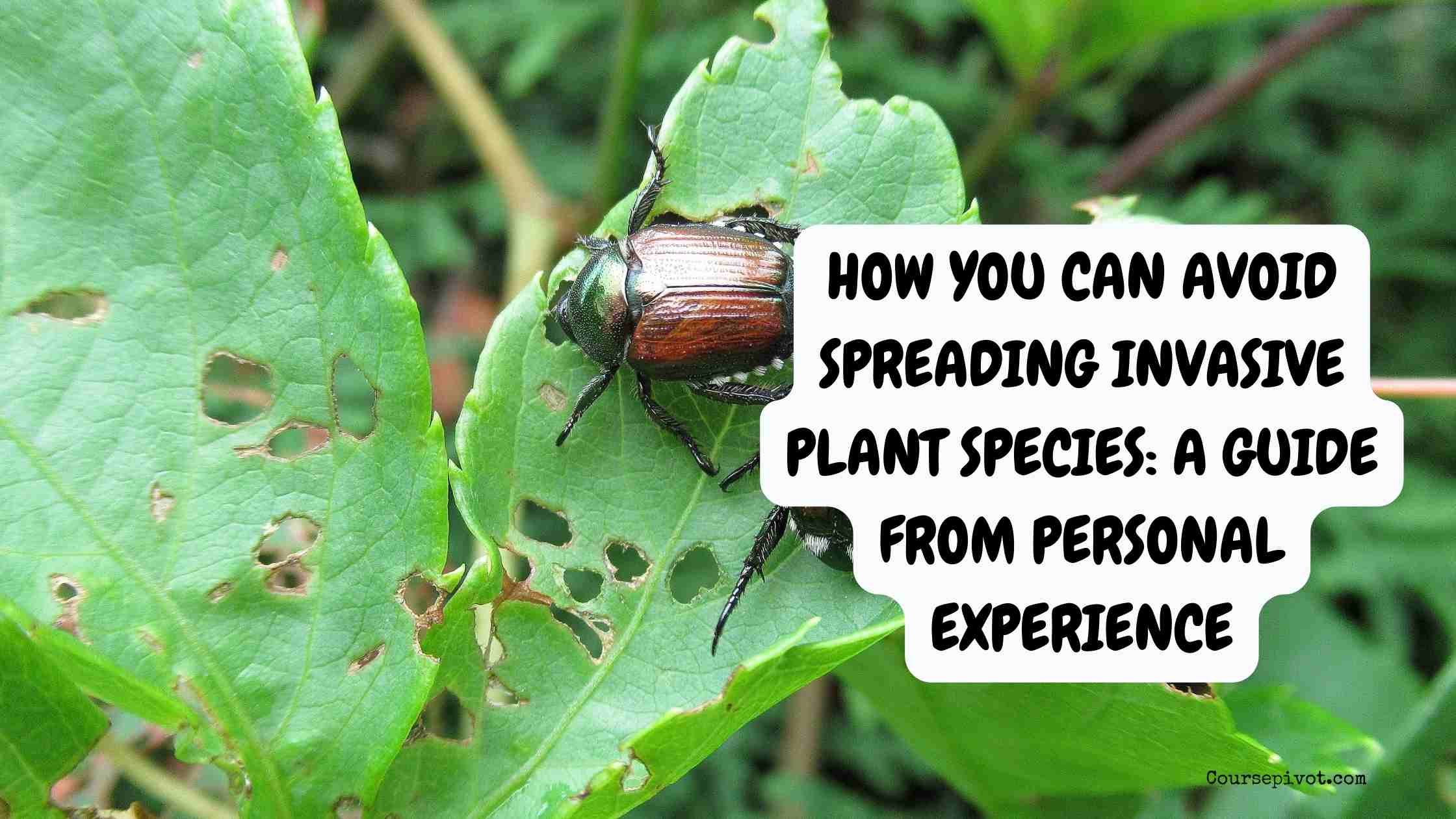
How You Can Avoid Spreading Invasive Plant Species
Invasive plant species are everywhere. They creep into our gardens, parks, and even protected forests, often unnoticed until the damage is done. If you’re like me, someone who loves hiking, gardening, or even just enjoying your backyard, then this topic should matter to you.
Table of Contents
We often forget how easily these unwanted plants travel. A single seed stuck to your boot or a few fragments of roots clinging to your gardening tools can be all it takes. And that’s where the danger lies. So today, let’s talk about how you can avoid spreading invasive plant species—and why this is everyone’s responsibility.
“I didn’t realize my innocent walk through a field could turn into an ecological disaster.”
That was me, a few years back, after unknowingly spreading an invasive grass through my hiking gear.
It was a wake-up call.
In this guide, I’ll walk you through simple but effective strategies to prevent the spread of invasive plants. These are tips I’ve learned through personal trial, local conservation training, and years of volunteering with community cleanup efforts.
Because it only takes a little awareness to make a big difference.
Why You Should Care About Invasive Plant Species
Invasive plant species aren’t just pesky garden weeds. They:
- Displace native plants that are essential for wildlife survival.
- Alter ecosystems by changing soil chemistry and water availability.
- Threaten biodiversity, often choking out rare or endangered species.
- Cost millions in agricultural and land management losses.
I’ve seen entire wetland habitats taken over by purple loosestrife. I’ve pulled hundreds of garlic mustard plants from native trails.
Trust me, the damage is real—and it starts with you and me.
Read our blog on What Distinguishes Primary and Secondary Consumers
🔍 Understanding How Invasive Plants Spread
To avoid spreading invasive plant species, you first need to understand how they travel:
- Seeds attach to your shoes, clothes, pet fur, and vehicle tires.
- Fragments cling to tools, boats, and garden equipment.
- Some are even intentionally planted—yes, even those “pretty” ornamentals at your local garden store.
It’s sneaky. That’s why prevention needs to become a habit.
🧼 Clean Everything—Every Time
🥾 Before and After Every Outdoor Activity
If you’re a hiker, biker, or hunter:
- Brush off your boots before leaving a trail.
- Clean your gear with a stiff brush or compressed air.
- Wash your clothes and shake them out outside.
- Check your pet’s fur for clinging seeds.
One time, I brought home burrs from a trail in my socks. Weeks later, they were sprouting in my backyard.
🧰 Garden and Yard Maintenance
- Sanitize tools before and after use.
- Inspect mulch or compost before applying—some may contain invasive seeds.
- Don’t share plants from your garden unless you’re certain they’re safe.
Even swapping plants with friends can be a risk. I once traded perennials and accidentally passed on Japanese knotweed.
🧺 Be Smart About Yard Waste
Never, ever toss pulled weeds, clippings, or soil from invasive species into:
- Compost piles.
- Open fields.
- Storm drains or creeks.
Instead, dispose of them in sealed bags, and if your local waste service offers it, use designated invasive plant disposal programs.
🧭 Stick to Native or Non-Invasive Plants
Avoid planting “fast-growing” or “low-maintenance” ornamentals without researching them. Many popular landscape plants are invasive in disguise.
Here’s what I do:
- Consult with local cooperative extensions or conservation groups.
- Download plant ID apps that flag invasives.
- Shop from native plant nurseries.
Bonus Tip:
If you remove an invasive plant, replace it with a native one right away. Otherwise, the space will get re-invaded.
🚫 Never Transport Plants Across Regions
It might be tempting to bring home a “cool plant” from a trip, but this is a top cause of invasive plant spread. Different states—and even counties—have their own ecological balance. What thrives in one place can devastate another.
I once brought a flowering vine from a road trip back to my home state. A year later, it was winding up my fence and killing my ivy. Lesson learned.
🌱 Join Community Efforts
One of the best ways to learn how to avoid spreading invasive plant species is by getting involved:
- Join local eradication or replanting groups.
- Attend native plant sales or educational events.
- Support habitat restoration projects.
Not only will you make a difference, but you’ll meet people who are just as passionate about protecting local ecosystems.
🧠 Stay Educated
The world of invasive plant species is always changing. What wasn’t a threat yesterday might be an invasive concern today. Keep learning by:
- Following conservation blogs or newsletters.
- Reading updates from your state’s Department of Natural Resources.
- Participating in citizen science projects that track invasive species.
Knowledge isn’t just power—it’s protection.
So, how can you avoid spreading invasive plant species?
You stay aware. You take small but consistent actions. And most importantly—you care.
I didn’t always know this stuff. But once I saw the destruction firsthand, I couldn’t ignore it. That’s why I brush my boots. That’s why I clean my tools. That’s why I plant only native species in my yard now.
We all have a part to play. Whether you’re a gardener, camper, or just someone who enjoys the outdoors—your actions matter.
“It’s not about being perfect. It’s about being responsible.”
Let’s protect what we love—one seed at a time.
Key Takeaways:
- Clean your gear before and after outdoor activities.
- Avoid sharing soil or plants unless verified non-invasive.
- Dispose of invasive species properly.
- Choose native plants and shop from trusted sources.
- Educate yourself and help spread awareness—not invasive plants.
Now that you know how to avoid spreading invasive plant species, will you make the effort to change a habit or teach someone else? That’s how real impact begins.
Cite this article
You can copy and paste your preferred citation format below.
Martin, L. & Arquette, E.. (2025, May 26). How You Can Avoid Spreading Invasive Plant Species. Coursepivot.com. https://coursepivot.com/blog/describe-how-you-can-avoid-spreading-invasive-plant-species/



